Several years ago, as were discussing trips to “queue up”, we added Spain and Portugal to our list. After several months of research, we developed this Spain and Portugal Itinerary for 25 Days that is round trip from Madrid. It requires a car for the first 18 days as we travel through the country exploring the many cities and towns. We spend the final 7 days in Madrid with several day trips via train.
Spain
After arriving in Madrid, we will pick up our rental car and head west to Salamanca. The 135 mile drive should take less than 2.5 hours After a nap from the long flight, we will start exploring.
Days 1-2 Salamanca
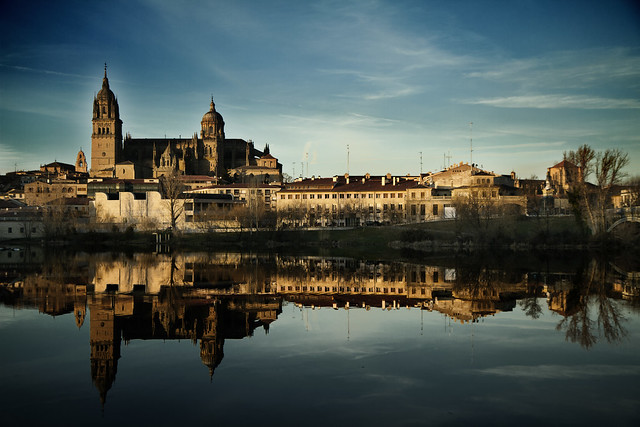
Salamanca is a UNESCO World Heritage City that has been a celebrated university town famous since the Middle Ages when it drew students from all over Europe. Some of the top attractions to visit in the 2 evenings and full day include:
- University
- Old and New Cathedrals
- The Old Town
- Roman Bridge across the Tomar River
- House of Shells
- Convent of St. Esteban
- Plaza Mayor
The town is said to have an almost magical ambiance, as the edifices made of Villamayor stone seem to glow a golden hue in the sunlight, and by night, the buildings are beautifully illuminated.
Portugal
Salamanca to Porto via Douro Valley Wine Region
Today will be a long car day as we drive from Salamanca to Porto. We will take an indirect route though the Douro Valley Wine Region that produces grapes and wine, much of which eventually become fortified Port Wine.
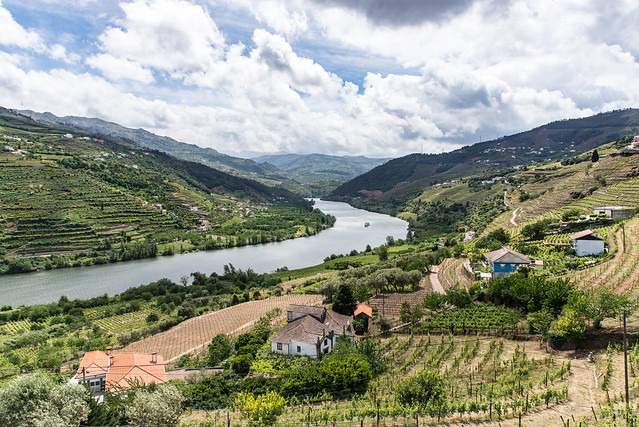
The Douro Valley has been devoted on the vineyards for centuries. It it the second UNESCO World Heritage Site visited on this itinerary. While the region is associated primarily with Port wine production, the Douro produces just as much table wine (non-fortified wines) as it does fortified wine. The non-fortified wines are typically referred to as “Douro wines”. The style of wines produced in the Douro range from light, Bordeaux style claret to rich Burgundian style wines aged in new oak.
This drive will take between 6 and 7 hours to cover the 275 miles and will cross the international border. Be sure to set your watch back one hour as Portugal is 1 hour behind Spain.
Days 3-5 Porto
We spend 2 days and 3 nights in the historic mercantile city of Porto. The old city will be this trip’s third UNESCO World Heritage site.
Today, take a walking tour to visit the Castle, many churches and cathedrals, and neighborhoods.
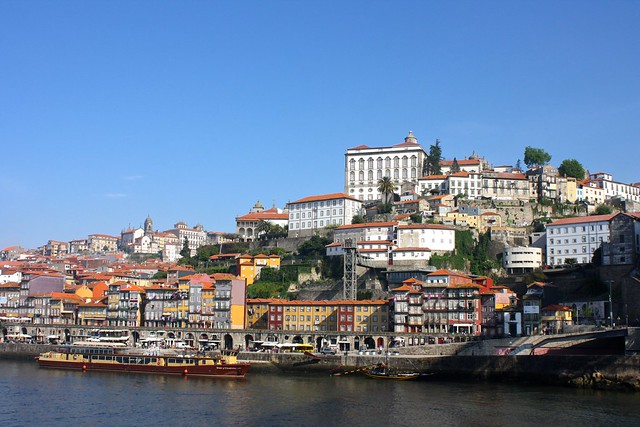
There are medieval walls, gleaming Baroque churches, the compact streets of the Ribeira district, the Romanesque Cathedral and much, much, more to see in Porto.
Porto to Lisbon via Tomar
Today we have a 3.5 hour 208 mile drive. After departing Porto on our drive to Lisbon, we stop near the mid-way point to visit the town of Tomar, one of Portugal’s historical jewels. Tomar was the last Templar town to be commissioned for construction. Tomar was especially important in the 15th century when it was a center of Portuguese overseas expansion under Henry the Navigator, the Grand Master of the Order of Christ, successor organization to the Templars in Portugal.
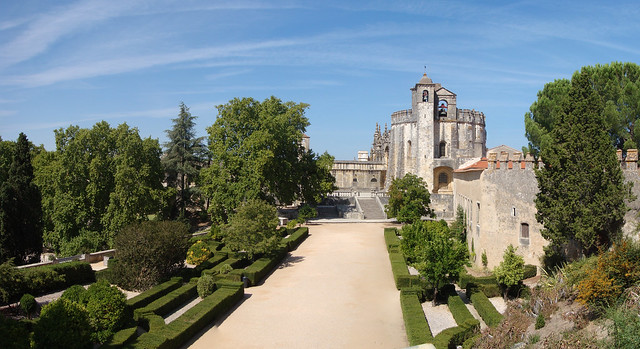
The town Tomar is dominated to its west by a monumental complex sitting on the top of a hill known as the Convent of Christ, a UNESCO World Heritage Site. The Convent of Christ is not just one monument, but instead it comprises the Castle, the Convent, the national wood known as Mata dos Sete Montes, the hermitage Ermida de Nossa Senhora da Conceição, and the aqueduct of Pegões. There are several other historic places to visit if time permits including:
- Historic Town Center
- Castle of Almourol
- The oldest synagogue in Portugal
- The Convent of S. Francisco;
- Chapel of S. Gregório and Nossa Senhora da Piedade
- The old Convent of the Anunciada
- The Convent of Santa Iria.
Days 6-10 Lisbon & Sintra
With 3 full days and 4 nights in Lisbon, we will spend 2 days in Lisbon and 1 day visiting nearby Sintra.
Lisbon Historic Neighborhoods
Spend one day walking the neighborhoods of the historic Lisbon Center, one day in the Belam area, and one day in Sintra.
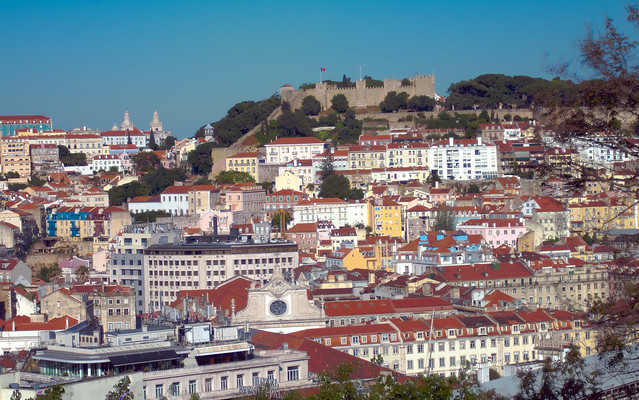
Lisbon is set on 7 hills just like Rome we will be using the many trams, elevators, and funiculars to explore the city.
Belam
Still in the City but to the West of the historic center is the Belam neighborhood. The two highlights of this “in the city day trip” are Jerónimos Monastery and the Belém Tower. Both are UNESCO World Heritage sites.
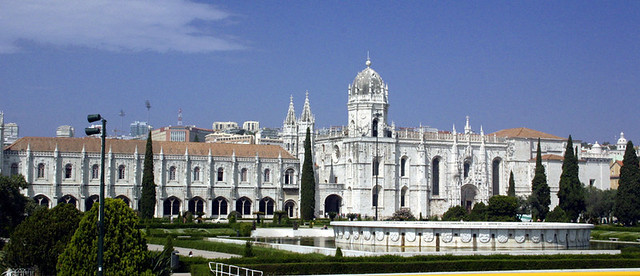
If time permits, this is a great day to visit Palace of Ajuda, the official royal house in the second half of the 19th century.
Sintra
Sintra is a picturesque town that boasts extravagant palaces, ancient castles and stunning scenery and lies only 25km from Lisbon. As parking is scarce, we will take a train to Sintra from Lisbon and rent a Twizzy car.
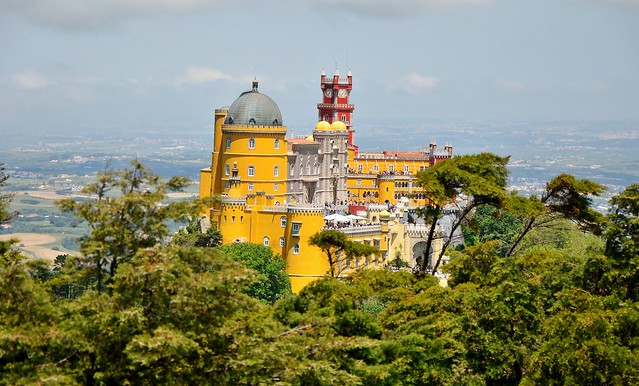
If we were to tour Sintra on foot and using the Tourist Bus, we would have to choose 2 or maybe 3 site to visit. Our Tizzy car will allow us to see 10 attractions/sites including a trip to the coast to the western most point in Europe. The Cultural Landscape of Sintra is also a UNESCO World Heritage Site.
Lisbon to Seville via Evora
Today is going to be a long day in the car as we leave Lisbon and head to Sevilla. Just before we say goodbye to Portugual, we will stop in Evora for the another visit to an UNESCO World Heritage Site.
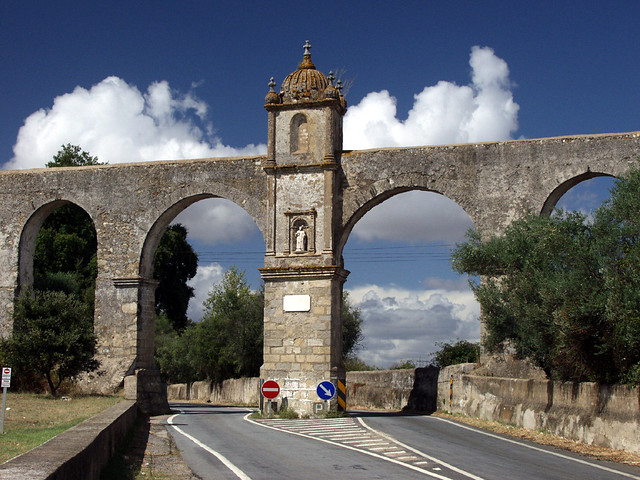
Evora has roots as far back as Roman times. The well preserved town center is still partially surrounded by medieval walls. The Roman Temple of Evora, standing in the middle of the historic town, is one of its most significant landmarks, along with the Cathedral of Evora and Church of the Lóios.
Spain
Days 11 – 13 Seville
Seville is said to be one of the most charming cities of Spain. It has a rich history and the city packed with innumerable monuments.
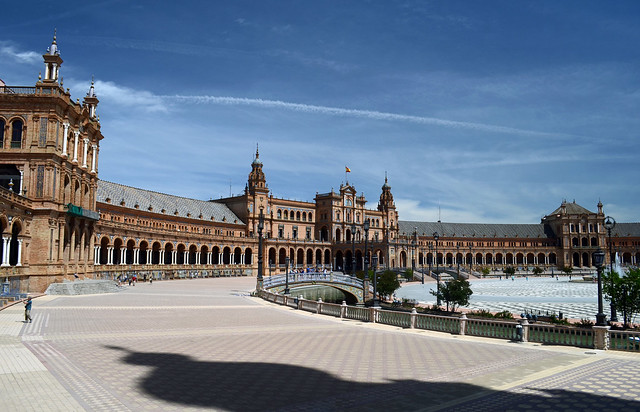
In our 2 days and 3 nights in Seville, we will be able to visit
- The third largest cathedral in the world,
- Thee Giralda tower
- The palace of the Reales Alcázares
- The Barrio of Santa Cruz with its narrow streets
- The Maestranza bullfighting ring
- Much more….
Seville to Granada via Pueblo Blancos
Today in another driving day as we motor along from Seville to Granada traveling 206 miles in 5 hours through los pueblos blancos. These are tiny “white villages” — some with impossibly long names .

An enchanting world of Moorish charm awaits us as we travel off the beaten path to the picturesque Pueblos Blancos (White Villages) of Andalusia. These small, quiet hilltop towns are distinguished by their simple whitewashed houses influenced by the Berber architecture of North Africa, the Moors’ native land.
Days 14 – 16 Granada
Granada is home to the Alhambra citadel which is one of the most famous buildings in Spain: a Moorish fortress with grand archways and delicate ornamental mosaics.

In addition visiting Alhambra, in Granada, we will step back in time, winding through the ascending cobblestone streets of Albayzin. Granada also offers beautiful views of Alhambra from the Mirador San Nicolas.
Day 17 Cordoba
Before we head back to Madrid we will spend a night in Cordoba. Cordoba was Spain’s capital during Roman and Moorish times. Today its old quarter and famous Mezquita (mosque) are one of Spain’s most beautiful remnants from the Moorish era.

After the Moors captured Córdoba in 711, what had previously been a Visigoth Christian church was split in two. This was then used by both Christians and Muslims as a place of worship. On the orders of the Emir Abd al-Rahman in 784, the church was destroyed and work began on a great mosque. Construction lasted for over two centuries and the building was eventually completed in 987. By this time, Córdoba had become the most important city in the Islamic Kingdom. When the city was reclaimed by Christians in 1236, the mosque was converted into a church. In the 16th century Charles V added a Renaissance nave on top of the Moorish structure.
Days 18 – 25 Madrid
Our final stop is Madrid where we will spend 7 nights and 6 days. There is so much to see we will spend 3 or 4 days exploring Madrid and take 2 or 3 Day Trips via train.
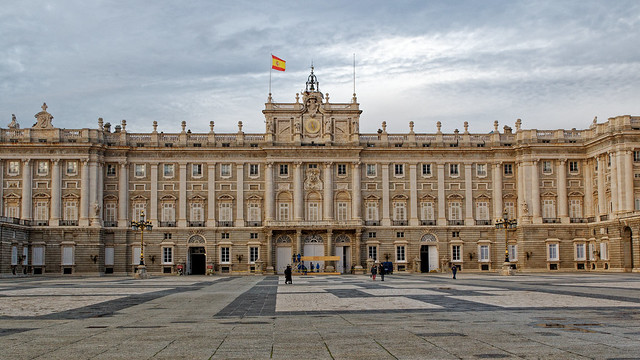
Top things to see in Madrid (among many others) include:
- Plaza España
- Gran Via
- Palacio Real
- Plaza Oriente
- Barrio de la Latina
- El Rastro (if it’s a Sunday!)
- Puerta del Sol
- Chocolateria San Gines
Toledo – Madrid 1st Day Trip
Toledo also presents a conundrum of Roman, Jewish, Christian, and Muslim architecture. This is what actually tells the stories of the confluence of these cultures which resulted from repeated conquests. Toledo is one of the most visited UNESCO World Heritage sites in Spain.
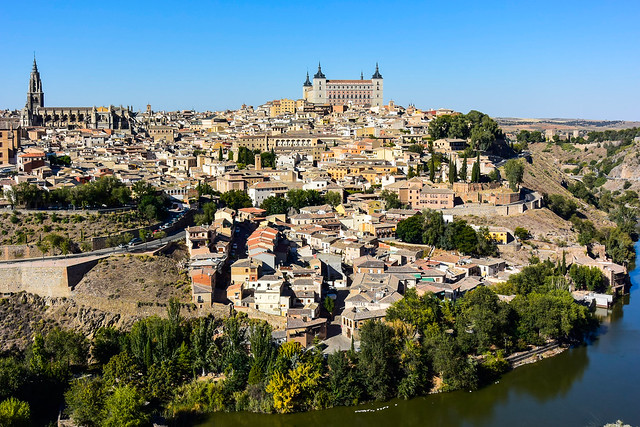
Not to be missed among the many sites include:
- The Cathederal
- The Alcazar
- The Monasterio de San Juan de los Reyes
- La Puerta de Bisagra
- The Bridge of Puente de San Martín
Segovia – Madrid 2nd Day Trip
Segovia is a World Heritage City, with unique monuments that make a visit well worthwhile. In addition to the monuments, Segovia offers an old Jewish quarter, stately homes, outstanding views and a green belt.
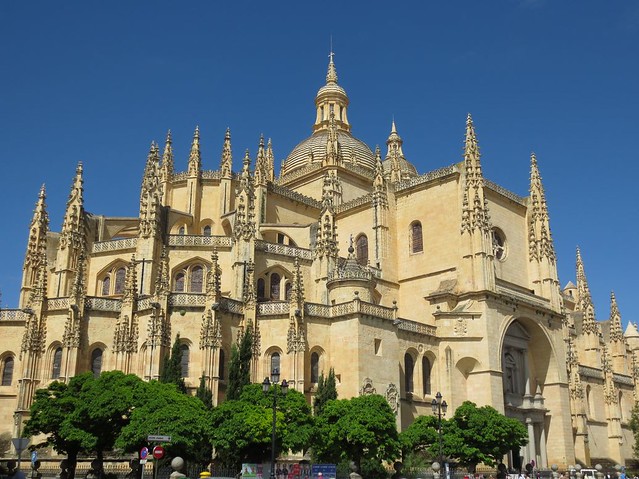
We will explore its architecture including medieval walls, Romanesque churches, a former royal palace and its famous Roman aqueduct. The old town and aqueduct are both UNESCO World Heritage Sites.
Avilia -Madrid 3rd Day Trip Option 1
Ávila’s old city, surrounded by imposing city walls comprising eight monumental gates, 88 watchtowers and more than 2500 turrets, is one of the best-preserved medieval bastions in Spain.
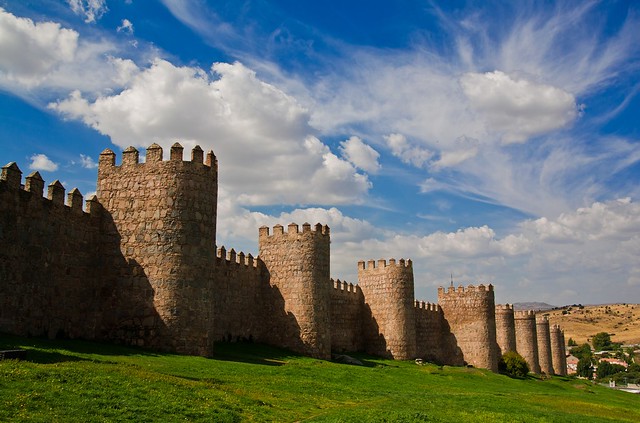
The ancient ramparts guard Romanesque churches, medieval convents, and Renaissance palaces making the UNESCO-listed Avila one of the most interesting cities in Spain. Throughout the early medieval period, Avila alternated between Moorish and Christian rule until the Reconquest by Alfonso VI in 1085. Many noble families settled here beginning in the 11th century and the town became known as Avila de los Caballeros (“Avila of the Nobles”).
Royal Palace of Aranjuez – Madrid 3rd Day Trip Option 2
The Royal Palace of Aranjuez is a former Spanish royal residence located 50km south of Madrid in the town of Aranjuez. It was established around the time Philip II of Spain moved the capital from Toledo to Madrid. Aranjuez became one of four seasonal seats of government.

In 2001, Aranjuez was named a World Heritage Site by UNESCO. The Royal Palace was the spring residence for the monarchs from the 16th to the mid-19th century. Designed as a court town, only servants from the Royal household could reside in the town. Everyone else stayed overnight in other villages and came to Aranjuez for the day.
